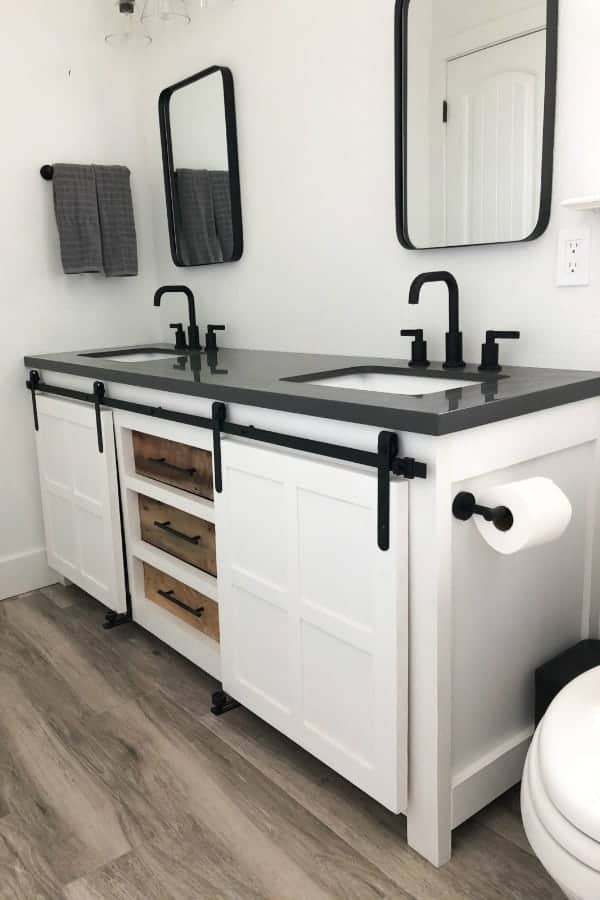Known for the elegant designs of theirs & extra storage area, bathroom cabinets are created with inclusive storage area and are opened by a home. Nowadays individuals are using the cabinets of theirs to keep every point, for that reason the bathrooms are approaching with a lot of storage area as well as compartment so as to maintain their make up, towels and many more.
Images about DIY Small Bathroom Cabinet

Just how many bathrooms do you have in the home of yours? Is more than one or even only one bathroom? It is much better for you to set shelves bathroom cabinets in each bathroom. Determine the top bathroom cabinet shelf and fit requires a good understanding of the things toilet requisites. Custom bathroom cabinets as the name suggests aren't mass manufactured.
Budget Friendly DIY Bathroom Vanity How to Build a Bathroom Vanity

You will find a variety of styles to select from but in this article we are planning to check out the size of the cabinets, the type and storage capabilities of material you should have the bathroom cabinetry of yours manufactured from. An additional benefit to picking double doors is the extra storage space.
DIY Bathroom Vanity for $65 – Angela Marie Made

If you as if you are able to customize the amount of doors, drawers and shelves in the cabinet so that you are able to have the bathroom of the dreams of yours. These types of cabinets are perfect for adding a bold focal characteristic on to the bathroom as the dual doors will definitely create a remarkable declaration in a bathroom.
DIY Bathroom Vanity Ideas Perfect For Repurposers

DIY Bathroom Vanity – 12 Bathroom Rehabs – Bob Vila

17 Gorgeous DIY Bathroom Vanity Ideas
:max_bytes(150000):strip_icc()/DesignbyEmilyHendersonDesignPhotographerbyTessaNeustadt_206-ecbe63f450304ae8b1109f6b3a493f02.jpg)
27 Homemade Bathroom Vanity/Cabinet Plans You Can DIY Easily

26 Small Bathroom Storage Ideas – Wall Storage Solutions and

10 DIY Bathroom Vanity Ideas The Family Handyman

DIY Bathroom Cabinet – Liz Marie Blog

15 DIY Bathroom Vanity Plans You Can Build Today
:max_bytes(150000):strip_icc()/shanty-bathroom-vanity-5944042e3df78c537ba15533.jpg)
Small Bathroom Vanity My Love 2 Create

DIY Bathroom Vanity – 12 Bathroom Rehabs – Bob Vila

Repurposed furniture as a DIY Bathroom vanity – at home with Ashley

Related Posts:
- Double Sided Mirror Bathroom Cabinet
- Bathroom Cabinet Height Code
- Victorian Bathroom Cabinet
- Staining Bathroom Cabinets Without Sanding
- Bathroom Cabinet On Legs
- Natural Hickory Bathroom Cabinets
- Revolving Bathroom Cabinet
- Using Chalk Paint On Bathroom Cabinets
- Birch Bathroom Cabinets
- Solid Wood Wall Mounted Bathroom Cabinet